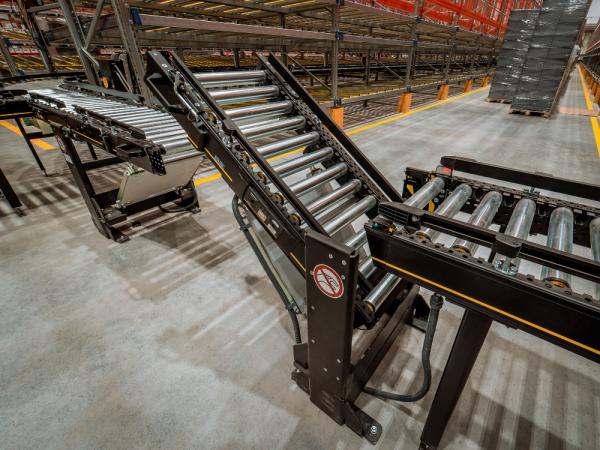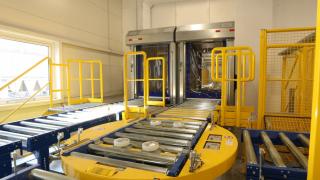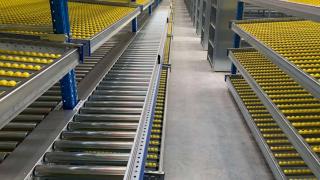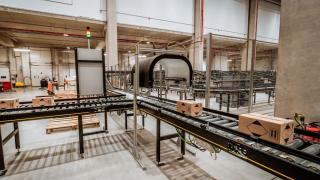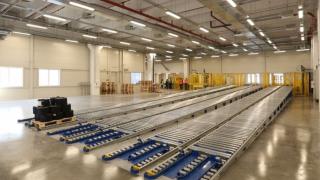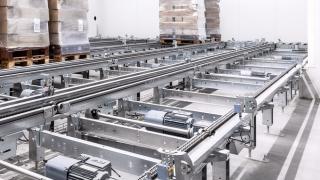The answer to this question, of course, is the automation of otherwise time-consuming processes. The goal is to improve the efficiency of all operations in the warehouse (not just transportation) and optimize logistics processes by achieving a constant and organized product flow within the distribution center.
Undoubtedly, conveyors automate transportation processes. They carry different goods within the warehouse from one point to another within a given time frame, increasing the volume of the goods that can be stored, processed, packaged, and dispatched.
Another effect of the integration is the reduction of potential human errors, immediately after the installation of the conveyor system. That includes unnecessary losses, incorrect labeling or product marking, placing goods in the wrong location within the warehouse, packaging damage, or damage to the goods themselves. The error elimination leads to a significant decrease in customer complaints, fewer returns, and satisfied customers who receive their orders on time and hopefully, order again.
Conveyor systems effectively divide the warehouse into well-defined sectors, defining precise working zones for each warehouse operator. As a result, operators no longer waste valuable time searching for goods. Companies increasingly try to achieve operational cost reduction, reducing their dependence on human labor, accelerating warehouse processes, and minimizing operational costs.
CONVEYOR SYSTEMS TODAY ARE NOT WHAT THEY USED TO BE. WHAT ARE THE DIFFERENCES?
Certainly, linear transportation of goods within a single continuous conveyor line doesn’t encompass all the functionalities of a modern conveyor system. Today, multifunctional dynamic conveyor systems are designed to save energy, change, and control the density of the material flow, use gravity, sort, distribute, or even change the moving direction if needed. They can be equipped with specialized checking stations, barcode scanners, high-speed cameras for quality inspection, or even measuring devices and counting scales.
Often, intralogistics conveyor systems are a combination of roller, chain, and belt modules, depending on the type of goods to be transported. Many contemporary businesses handle pallets, boxes, cartons, and even unpackaged goods simultaneously, so they need an integrated, well-functioning system.
HOW ARE MODERN CONVEYOR SYSTEMS MANAGED? WHAT VARIABLES DO NEW PLC TECHNOLOGY ALGORITHMS CONSIDER?
The management of different conveyor systems can be centralized or decentralized, typically carried out by Programmable Logic Controllers (PLCs). Both centralized and decentralized controlling systems use powerful PLCs with larger memory capacity and processing capabilities. These new, more powerful controlling systems allow the processing of bigger data and information, enabling the development of efficient algorithms for conveyor system control – ones, that are energy-efficient, secure, and intelligent.
Increasingly, the management of the conveyor modules is being decentralized, thereby adding dynamics to the system. A significant part of the controlling logic is transferred to lower levels of the systems.
Photo sensors consider the precise moment when a specific SKU enters or exits a particular zone or module of the conveyor system. The controlling algorithms consider the distance between objects (which can be variable and configurable), the direction of movement, power consumption, the weight of each SKU, the speed of movement, the density of the goods flow, and even the exact position of the motor shaft in this very moment. These and many other variables are monitored in real-time with a single goal - optimizing the intralogistics transportation of goods, and adapting it to the specific needs of the business.
UNCOMPARABLE ENERGY EFFICIENCY
When a conveyor system is motorized using a single electric motor, driving the entire line, the electricity consumption is higher, because the entire line moves whether a single product or multiple items are being transported along the conveyor line at this moment.
However, STAMH Solutions implements different systems of dynamic multifunctional conveyor modules that are driven sequentially, only when the respective module is transporting warehouse units. This allows for optimal use of electricity and significant cost reduction. Furthermore, the design and engineering of gravity and spiral conveyor systems in specific areas of the warehouse enable the movement of goods without any electricity consumption.
WHAT IS THE ZERO PRESSURE ACCUMULATION TECHNOLOGY AND WHAT TYPE OF CONTROLLING ALGORITHMS EXIST?
In order to engineer different modes of SKU movement through the conveyors´ lines, the driving of the conveyors can't be centralized. Decentralized conveyor systems control enables different types of systems:
- simultaneous movement of goods without defined spacing (zero pressure accumulation technology - train mode);
- sequential movement with defined spacing (zero pressure accumulation technology - singulation mode;
- mixed mode - where goods can move apart or come together according to the needs, as well as being buffered in designated zones for that purpose;
SAFETY AND PROTECTION OF EXISTING OPERATIONAL CONVEYOR SYSTEMS AND TECHNOLOGIES
Last, but not least, modern conveyor hardware and software technologies should be equipped with all the necessary intellectual property protection, embedded in the control modules. They should also have protection against various potential attacks, including cloning, copying, or damaging the conveyor system management software. Additionally, systems must prevent electrical network overloads and voltage surges;
Don´t hesitate to explore all the types of multifunctional conveyor systems and technologies, available on our website, and feel free to contact our team at office@stamh.com, so we can engineer and implement the most suitable conveyor system for you and your business.


